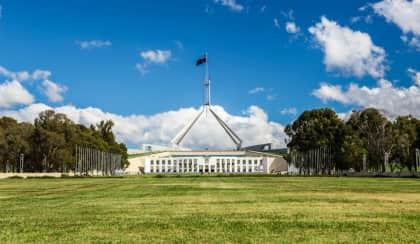What’s in the government’s $11.3bn ‘Homes for Australia’ plan?
Prime Minister Anthony Albanese has announced his big budget line items to tackle Australia’s housing crisis.

Following a national cabinet meeting with the premiers and chief ministers of Australia that ran into the evening of Friday, 13 May, the Prime Minister unveiled the “Home for Australia” plan – a multibillion-dollar package spanning various housing sectors that will, in some cases, be matched by state and territory contributions.
This includes:
- $9.3 billion over five years under the National Agreement on Social Housing and Homelessness, which will go towards providing crisis support and building and repairing social housing. The deal includes the Commonwealth doubling its homelessness funding to $400 million every year, matched by states and territories.
- $1 billion in funding for states and territories to build the roads, sewers, energy, water and community infrastructure to support new residential development.
- $1 billion for crisis and transitional accommodation for women and children fleeing domestic violence, and youth under the National Housing Infrastructure Facility. This includes increasing the proportion of grants for this investment from $175 million to $700 million in the budget to be able to support crisis and transitional housing.
The government also stated that it will work with the higher education sector on new regulations to mandate that universities increase their supply of student accommodation to take pressure off the private rental market.
These announcements build on the news that the forthcoming has earmarked $90.6 million to boost the construction workforce through fee-free TAFE funding and support for streamlining skilled migrant visas.
In announcing the funding, the Prime Minister acknowledged that the acute shortage of housing is being felt right across the country.
“This isn’t about one suburb or one city or one state. It’s a challenge facing Australians everywhere and it needs action from every level of government,” Prime Minister Albanese said.
Treasurer Jim Chalmers agreed, stressing that the government is committed to increasing stock across the housing spectrum.
“We’re delivering billions more dollars in the budget to build more homes across the country because we know that to address this housing challenge, we need to boost supply.”
Minister for Housing Julie Collins said the funding contained in Home for Australia would “turbocharge the construction of new homes right across the country and ease the pressure on Australians doing it tough”.
All three stressed that the government is still committed to the goal of building 1.2 million new homes over the course of the next five years.
Reactions from the housing industry are positive, with Property Council chief executive Mike Zorbas commenting that the infrastructure funding alone meant that “new homes will get built faster”.
“We also welcome the historic recognition of purpose-built student accommodation as a critical asset class supporting Australia’s housing needs.
“These projects are the fastest way to add housing choice for young people and take pressure off the broader rental market,” he said.
Student Accommodation Council executive director Torie Brown called the announcement “historic”, and commended the government for recognising that “the key to maintaining a sustainable and prosperous university sector, is our ability to house students in accommodation that suits their needs, is safe and conveniently located”.
Zorbas also applauded the government’s commitments to social housing and crisis accommodation.
Moreover, Master Builders Australia CEO, Denita Wawn, welcomed the strong stance on supply across housing types.
“We know whether it’s social and community housing, rentals or owner-occupiers, there is not enough supply to house all Australians. Targeted measures in social housing, student accommodation and critical infrastructure all go towards relieving some of the more acute supply pinch points,” Wawn said.
The body is now advocating for governments to turn their attention to other barriers that inhibit housing supply, such as the cost of building and expanding time frames.
“Workforce shortages, low productivity, industrial relations and planning reforms all continue to drag down our capacity to deliver the 1.2 million homes over the next five years,” Wawn warned.
Housing Industry Association managing director, Jocelyn Martin, agreed that while the funding increase is not the “full answer to addressing Australia’s significant housing shortages”, $11.3 billion package is an important step forward.
“It will bring more supported housing options into the market over the next few years targeted to those who need it most and reducing demand from these home seekers on other parts of the housing market,” Martin said.

